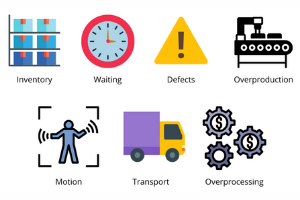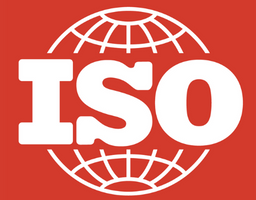
The heart of lean is eliminating wastes in all aspects of manufacturing. In lean, waste is defined as anything that does not add value to your customers. When you dig into what waste actually is, you’ll find a common term used is the Seven Deadly Wastes.
Seven Deadly Wastes
The Seven Deadly Wastes are areas of your manufacturing process that can be explored to find opportunities for improvement. These seven areas may be costing your company unnecessary fees and might be worth looking into.
Overproduction
Overproduction means you are making something before it is actually needed. This can lead to some serious problems with inventory and issues with knowing your true supply and demand needs. Manufacturing overproduction typically happens when a ‘push production system’ is implemented rather than a ‘Just In Time’ philosophy. If you’re overproducing, you’re losing money in the end.
Countermeasures for Overproduction:
‘Takt Time’ — Paces production so the rate of manufacturing matches the rate of customer demand
‘Kanban’ — Pull system to control how much product is manufactured
Reduce setup times which will allow for small batches to be produced
Waiting
Waiting refers to how much time is being held up getting to the next step in production. When your production has a high wait time, value is lost and business is not running as efficiently as possible. Waiting can be anything from waiting for materials to arrive to having equipment with insufficient capacity.
Countermeasures for Waiting:
Continuous Flow — Design process that has minimal buffers or downtime between production steps
Standardized Operating Procedures — Set of instructions for processes which ensures consistent work and consistent time
Transport
Waste in transport, or transportation, is when there is excessive movement of materials or people, this can include the movement of tools, equipment, etc. When this type of waste occurs, the likelihood of product damage increases. When this happens with employees, their time is not being used to its full potential.
Countermeasures for Transport:
Value Stream Mapping — Design a production line that allows flow between processes
Motion
Waste in motion includes unnecessary or repetitive movement in people, equipment or machinery. This includes walking, lifting, reaching, ect. Lean suggests that these tasks should be redesigned to enhance work and increase health and safety of employees. When a repetitive movement happens, no value is being added.
Countermeasures for Motion:
Create an environment that is organized and as efficient as possible for employees
Overprocessing
When there is more work or effort being done than needed for processing, overprocessing is happening. Overprocessing can come in many forms. It can be having too high of technology for machines, running too many tests, having more functionalities than needed…just to name a few.
Countermeasures for Overprocessing:
Kaizen — Always have the customer in mind and compare their needs to the manufacturing process, while looking for ways to simplify
Inventory
Inventory is usually looked at as a positive, but having more inventory than what is needed to sustain a steady workflow can be detrimental. When there is too much inventory, product defects can occur, money allocation gets uneven, and hidden problems can arise which will ultimately slow down production.
Countermeasures for Inventory:
‘Just In Time’ — Purchasing raw materials only when needed
Continuous Flow — Decrease buffers between production steps
Defects
When a product is not up to standards, it is considered a defect and needs additional attention to be reworked or needs scrapped completely. Both the rework and scrapping are wastes. Rework requires additional resources from both equipment and employees. Scrapping the product as a whole is a waste in product and time.
Countermeasures for Defects:
‘Poka-Yoke’ — Error proofing the design process which decreases the likelihood of defects
‘Jidoka’ — Design equipment to detect defects and stop production
Go back and look at defects and get to the root cause, then implement changes accordingly
There are many resources when it comes to eliminating wastes, which can become overwhelming on where to start. Our team can be your starting point to get you off in the right direction. Read more about our continuous improvement services here.
Read our next blog of the lean series – Lean Benefit #2: Organization/Cleanliness
Did you miss our last lean blog overview? Read the 3 Benefits of Implementing Lean into Your Manufacturing Production: A Blog Series.
















